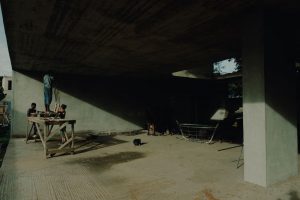In the rural lands of the Rocky Mountains, Richard Rothman exposes the unsettling truth of American culture and its reliance on the environment
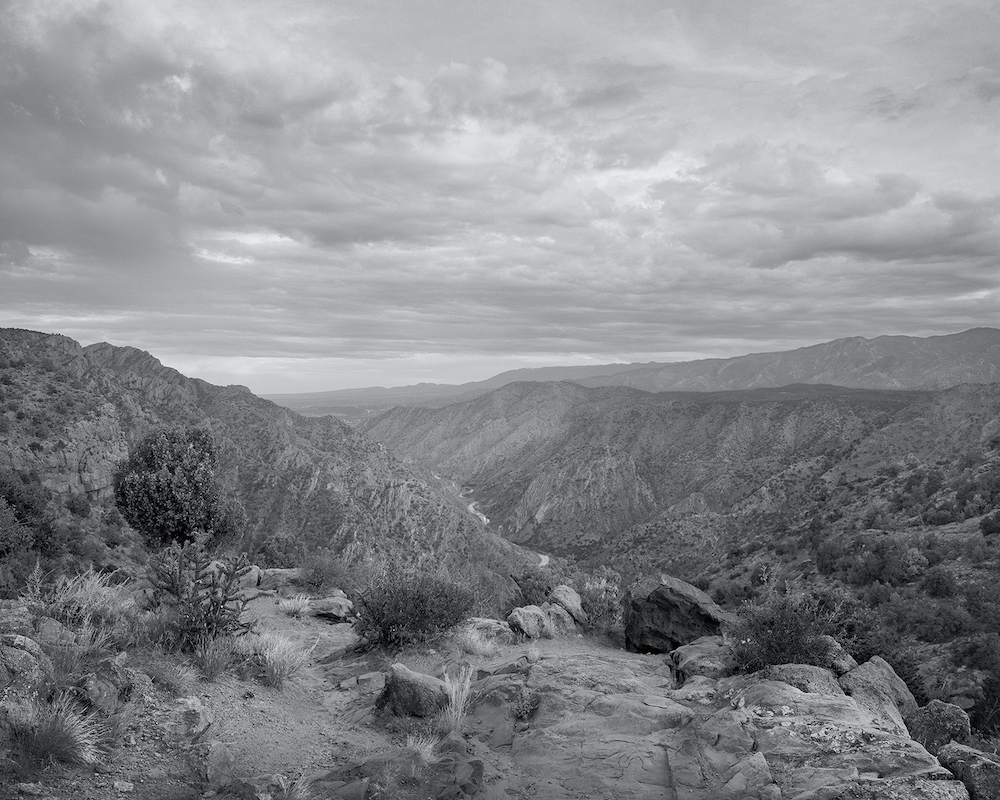
On the introductory page of Richard Rothman’s Town of C, a book published by Stanley/Barker, a naked couple pose starkly in front of the camera. The image, shot in a tonal shade of monochrome, depicts the pair in an embrace, standing amongst a prison cemetery located in the rural lands of Colorado – the part that’s allocated to the state penitentiary for inmate burials. This is unusual for a prison to be located in the middle of a town, but this one in particular was first a territorial prison (meaning medium security) that housed 25 prisoners, which was then formed into its own prison around 1874. The couple, more so on the woman’s side, instigated the idea to pose nude upon meeting with Richard, and this inadvertently set up what the photographer now goes on to describe as a metaphor “tied up with a bow” – that which hints to the biblical, spiritual and the natural.
“I met the woman in this photograph when she was a child,” says Richard, stating how the couple now live particularly close to the cemetery. “The man in the picture is the father of three of her five children, two of whom feature in another picture, in the doorway of a rehab house. He had a long association with LA gangs before moving out to Colorado. Anyway, she persuaded her partner to pose nude with her for me. As soon as I set up for this picture it began to rain, so I was in a hurry and it hadn’t occurred to me that this was going to be an Adam and Eve picture. Months later, on a visit to the Morgan Library, I came upon a postcard of the Dürer etching depicting The Fall of Man, and the expulsion from the garden. It had been an unconscious connection, because I grew up with that story and that particular image, which I was fascinated by, and I realised, much later, that it was a fitting opening to the narrative of the book that unfolds, that it spoke to the current environmental situation, and that it is an enduring, eloquent myth about the universal experience of loss of innocence.”
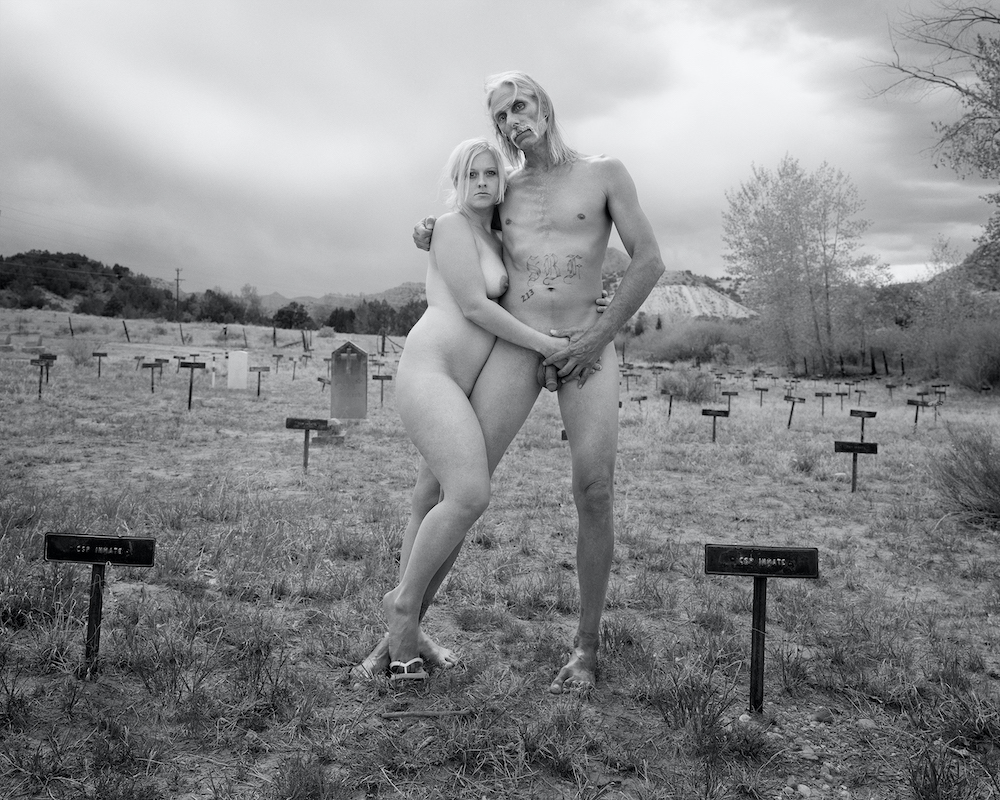
In this part of the world, more specifically the Front Range of the Southern Rocky Mountains, the landscape reigns supreme. The summits tower over the valleys, stretching around 300 miles from Colorado to southern Wyoming. Hikers and mountaineers are drawn to its vast populous of treks, climbs and views, where peaks exceed 4,000 metres and wrap around a variety of rivers. In contrast with this almost inimitable backdrop, there are also vast cities and towns resting on the banks and outer edges of the ranges. This includes the small rural town that Richard photographically paints through the pages of Town of C, one that remains unnamed. “I wanted to tell the biggest story I could, starting with a portrait of a small town, reflecting on the national culture at large and moving out to the mystery – the world beyond our planet – that we’ve all come from,” he adds. And it’s through the very town, its people, its architecture, roads and undeveloped lands, that Richard aims to shed light on the relationship between these two beings: the human and the environment.
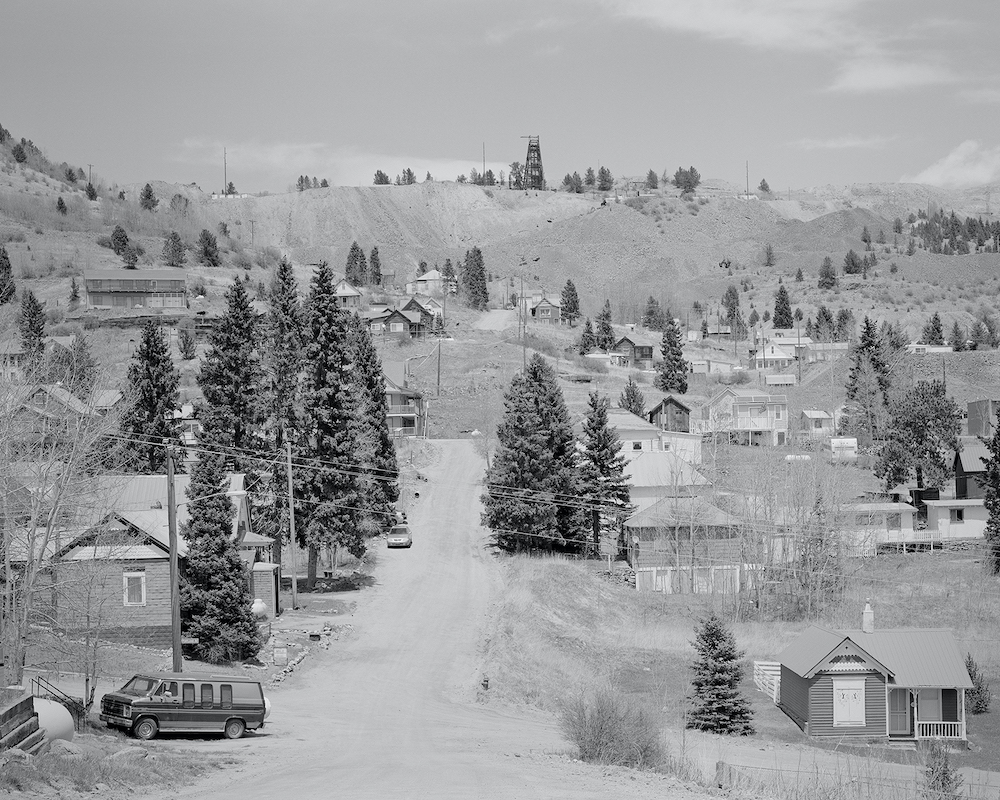
A shy away from the typical American road trip conceived through the work of photography greats like Robert Frank and Walker Evans, Town of C does things a little differently. Instead, Richard looks at the archetypal town and, more specifically, a settlement that he’s visited regularly over the years, revealing the societal and economic complexities of the place through considered compositions and adequate time spent in each location. “Almost everything about the way we live in America, and so much of the world now, is obviously unsustainable and drastically out of tune with the environment we inherited,” he explains.
“When I began work on the project, climate change wasn’t as widely understood. Today, you have to be wilfully ignorant not to be aware of it. I think there are people who are there because they appreciate its beauty, and I think there are many more for whom life is so challenging they don’t have the luxury to enjoy the beauty around them. So many of us are forced to look down at our shoes and live month-to-month, just taking one step at a time to survive. Americans in general aren’t encouraged to appreciate beautiful land. We don’t teach aesthetics to children in most schools, and it gets in the way of businesses that want to exploit natural resources for profit. Our relationship to nature is deeply troubled and ill considered.”
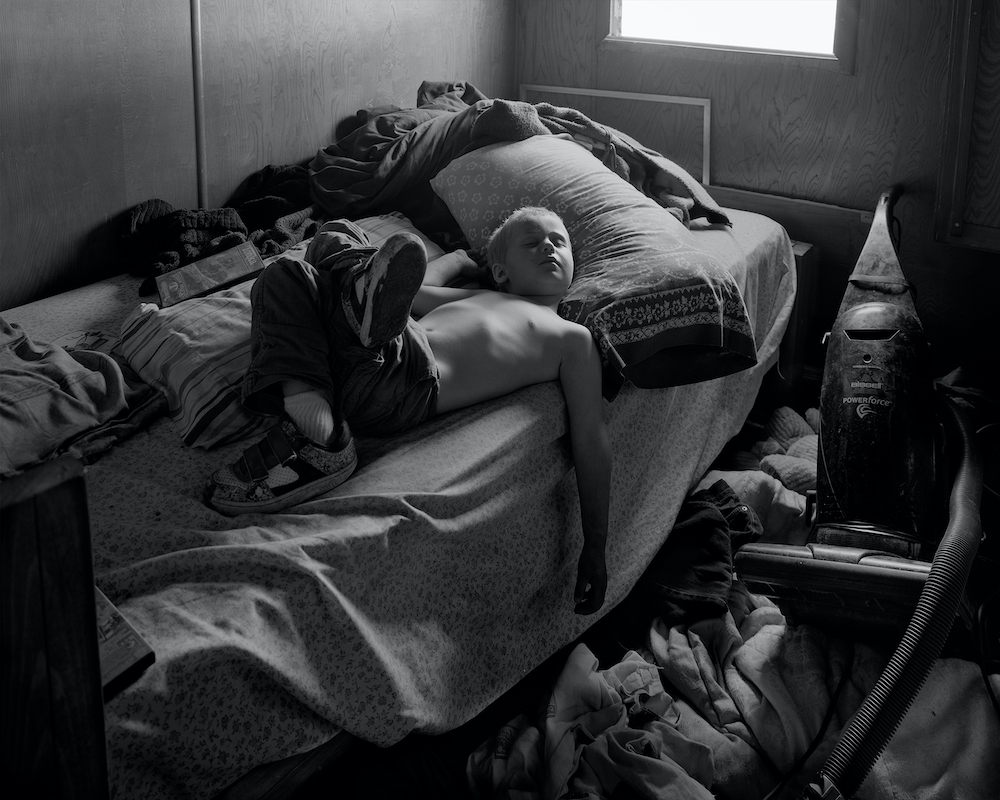
There are multiple layers hidden throughout Town of C, the most notable being the portrayal of nature’s fragility. Humankind’s reliance on the environment is massive, and in this book, we see this brought to the fore through the energy of the river that runs through Colorado and the Rocky Mountains – the lifeline to all that settle upon the water’s edge. Then, as we meander through the remaining parts of the book, this consuming visual narrative expels themes of the American dream and how, especially in the American small town, these ideologies and dreams of endless natural resources are dwindling. What does the future hold for these lands?
As the book comes to a close, I’m reminded again of the first image of the naked couple and its explicit synergy between place and person. For Richard, this single picture resonates with him for its rich symbolism, as well as its relationship to the Grant Wood painting called American Gothic – “of the stone-faced man and his ill-at-ease-partner, pitchfork in hand, all business and no joy,” he says. “I felt the graveyard picture had a potential iconic quality. The myths of American small town steely resilience and self-sufficiency have collided here with the relentless forces of contemporary socio-economics, and the finite nature of land and resources. The little metal places in the picture serve as gravestones, all of them identified with the initials CSP, which stands for Colorado State Penitentiary. The prison used to make the license plates for Colorado vehicles. The grave markers were made in the same workshop by prisoners for their fellow inmates. They represent people whose families couldn’t afford, or didn’t care enough, to place actual stones on their burial plots, and I couldn’t help but think that said something revealing about their lives, and perhaps why they ended up there in the first place.”
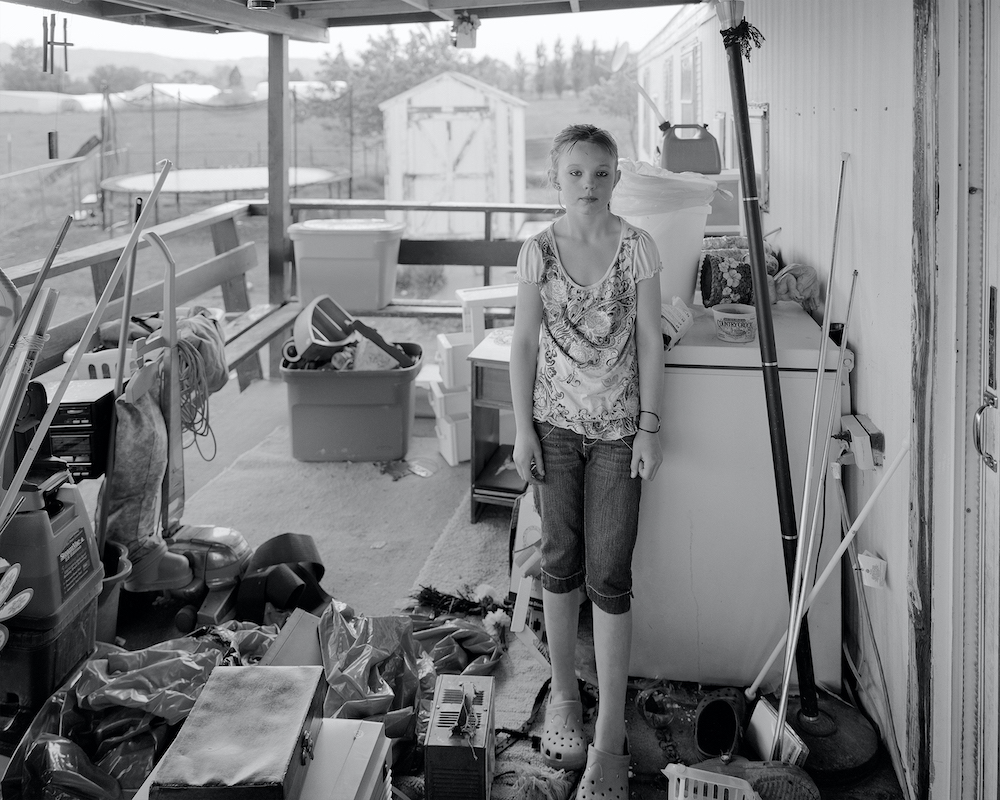
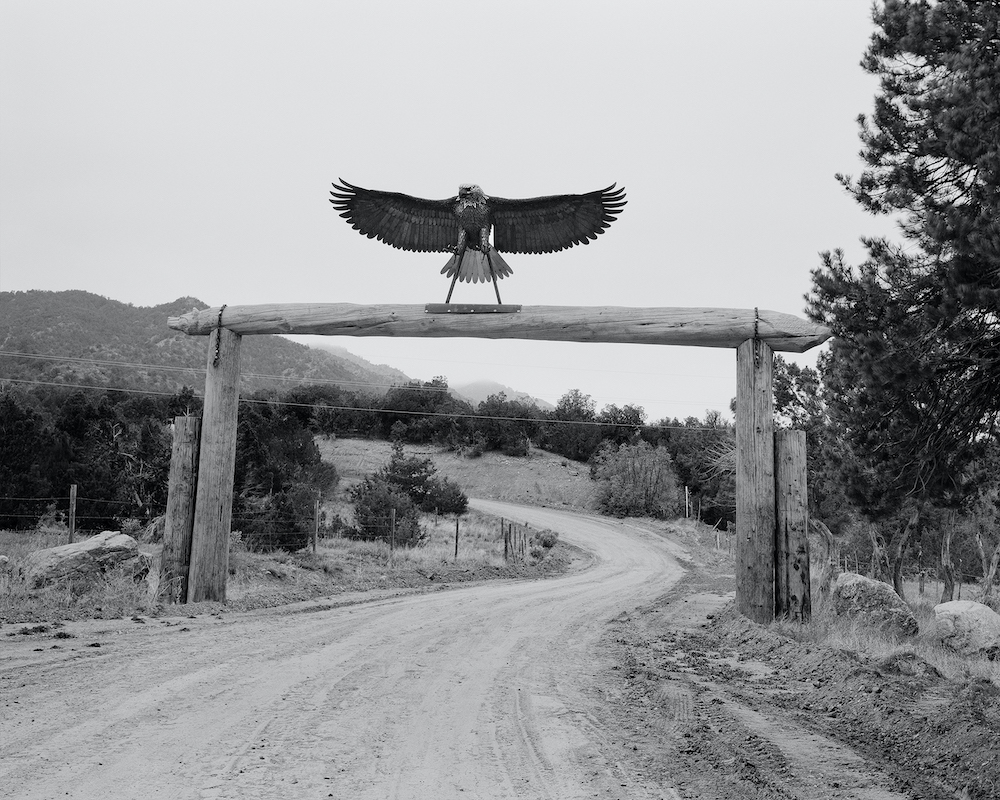

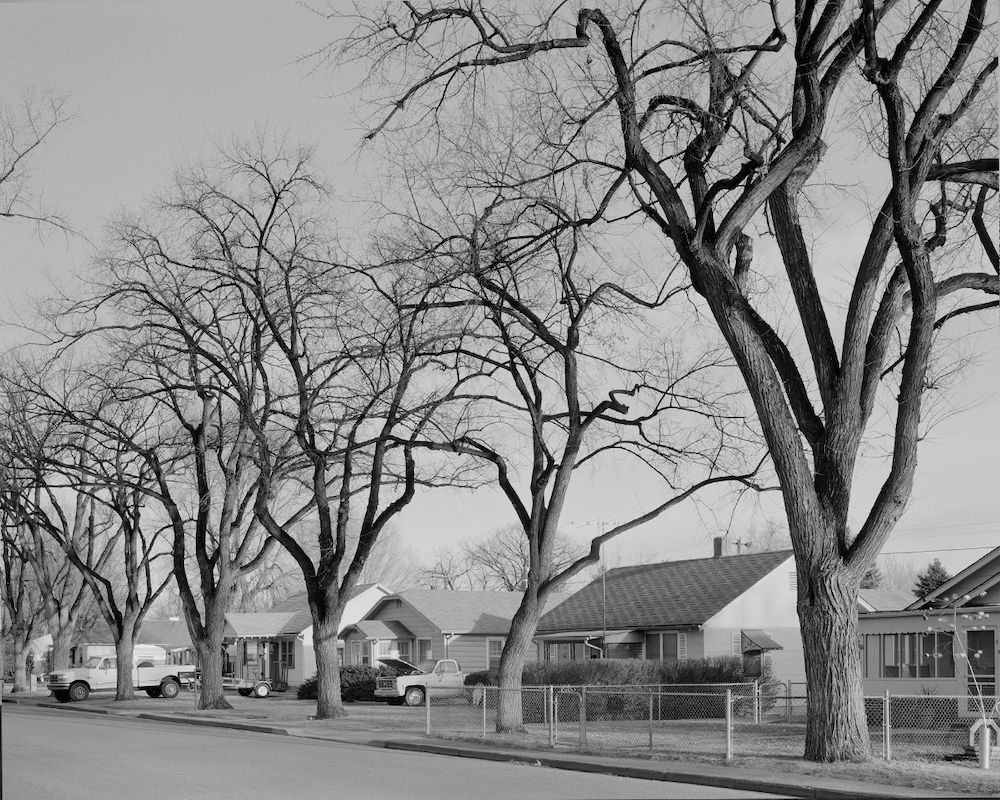
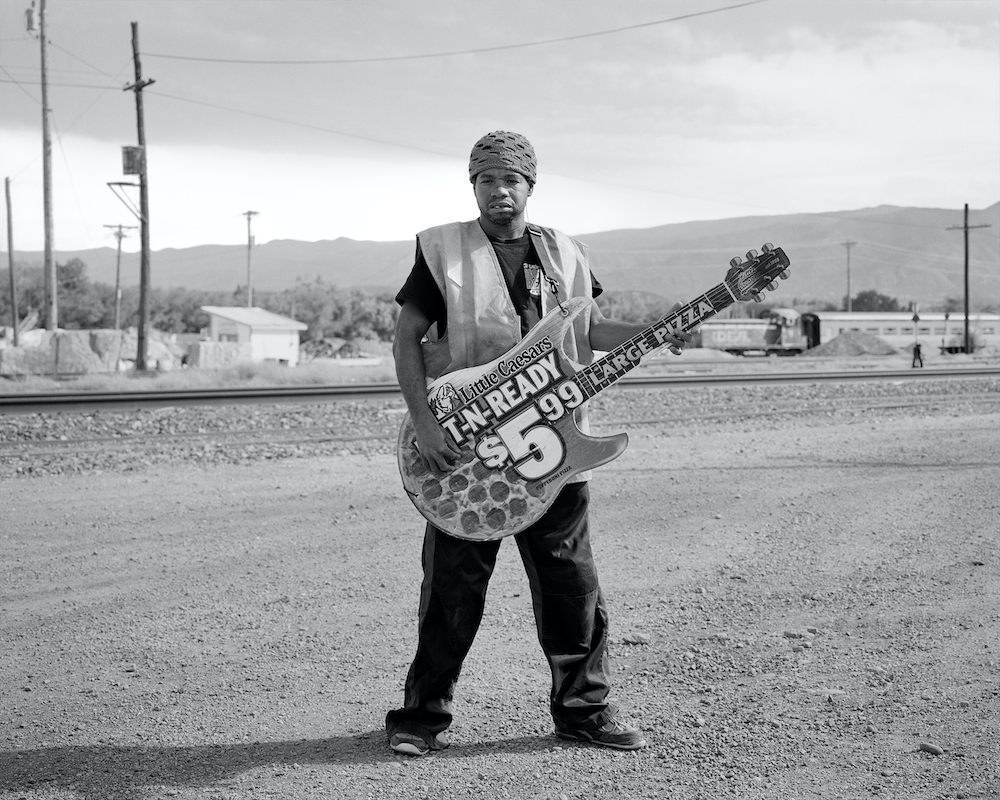
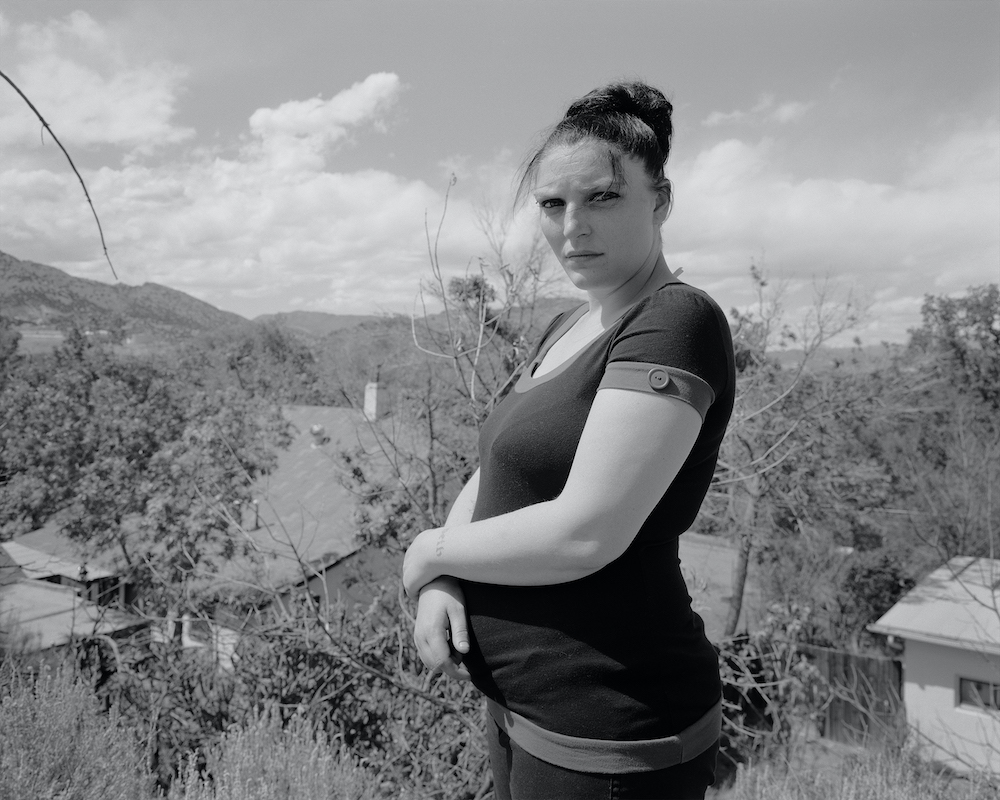
All photography courtesy of Richard Rothman
Town of C is published by Stanley/Barker




